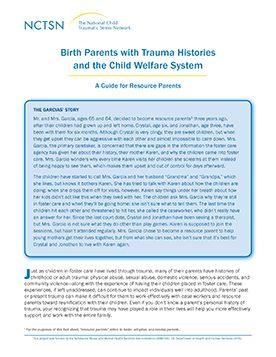
Birth Parents with Trauma Histories and the Child Welfare System: A Guide for Resource Parents
Provides suggestions that resource parents can use to recognize how trauma may have impacted the way birth parents parent.
The following resources on Child Welfare were developed by the NCTSN.

Provides suggestions that resource parents can use to recognize how trauma may have impacted the way birth parents parent.
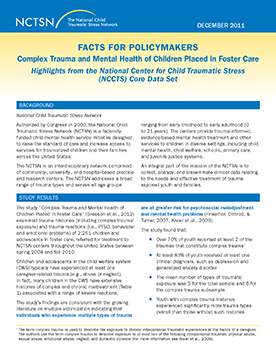
Describes the complex trauma and mental health of children placed in foster care among NCTSN care recipients as well as policy recommendations.

Describes child and adolescent trauma exposure and psychosocial functioning among NCTSN care recipients in residential care.
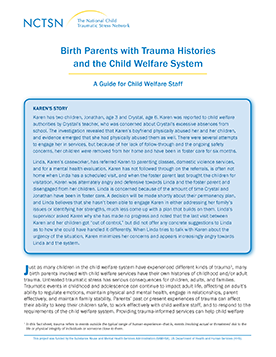
Highlights the importance of understanding the serious consequences that trauma histories can have for birth parents and the subsequent potential impact on their parenting. This fact sheet is for child welfare workers.
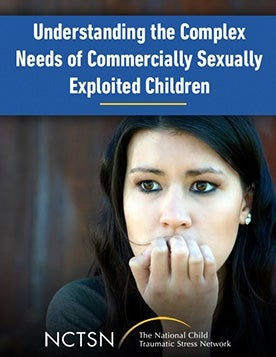
Provides an overview of current issues, challenges, and emerging practices facing child welfare jurisdictions as it relates to children who have experienced commercial sexual exploitation.
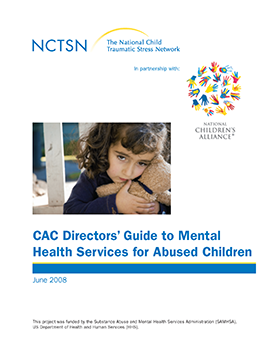
Helps Children's Advocacy Center (CAC) directors evaluate options for offering mental health services, and assessing and/or comparing the quality of services available in the community.

Presents the results of a survey conducted among child welfare agencies in a number of states.
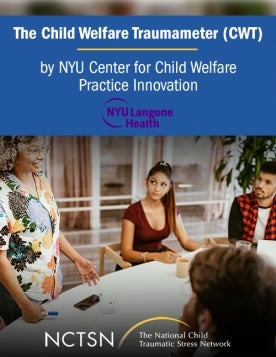
Is a collection of organizational assessment tools and processes, developed by the NYU Center for Child Welfare Practice Innovation, that supported the evaluation and implementation of trauma-informed practices within public and private agencies that provides child welfare services (e.g., child p

Is a self-rating tool that walks users through each of the competencies in STS cross-disciplinary version.

Assists mental health agencies with navigating and understanding The California Evidence-Based Clearinghouse for Child Welfare (CEBC) website.
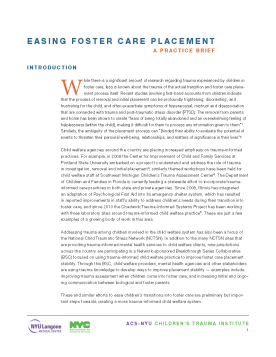
Focuses on addressing secondary traumatic stress experienced by child welfare staff, easing children’s transitions into foster care, and working with parents who have been impacted by trauma.
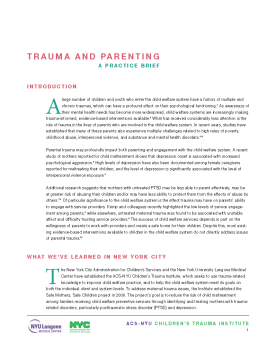
Focuses on addressing secondary traumatic stress experienced by child welfare staff, easing children’s transitions into foster care, and working with parents who have been impacted by trauma.